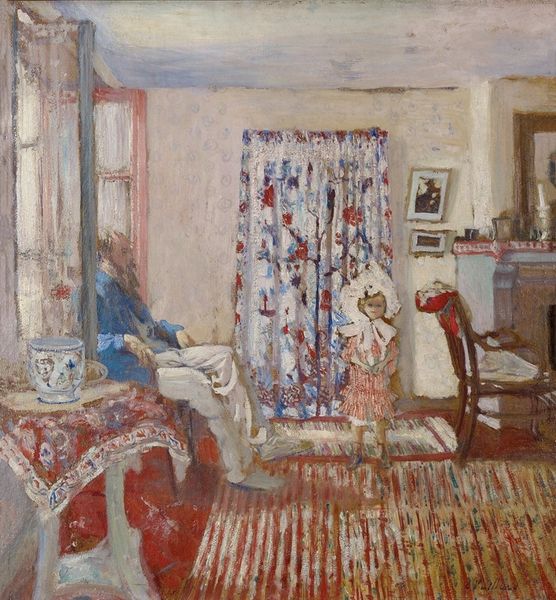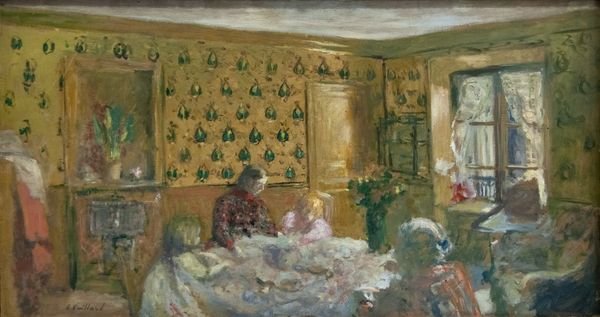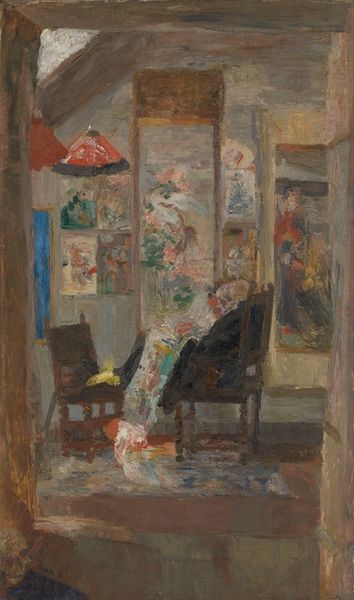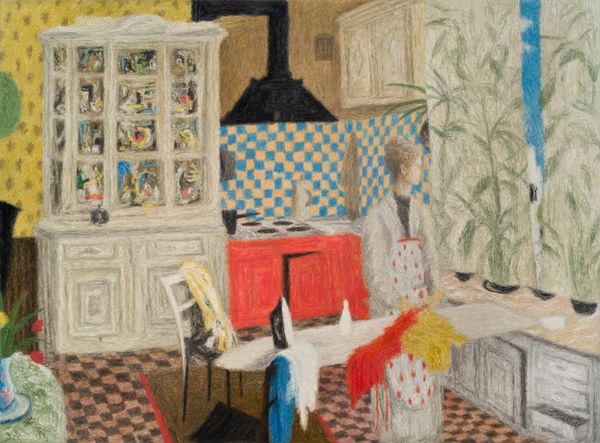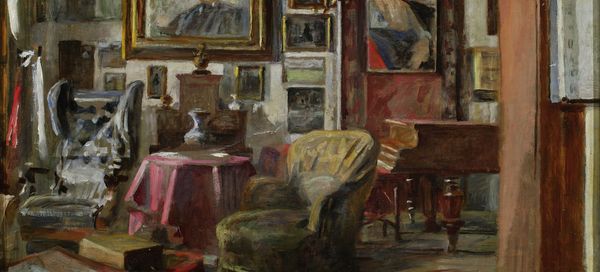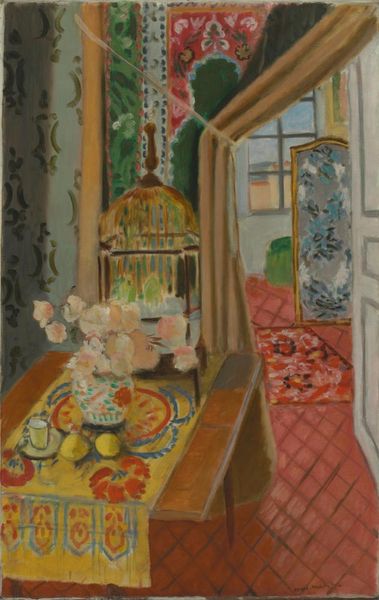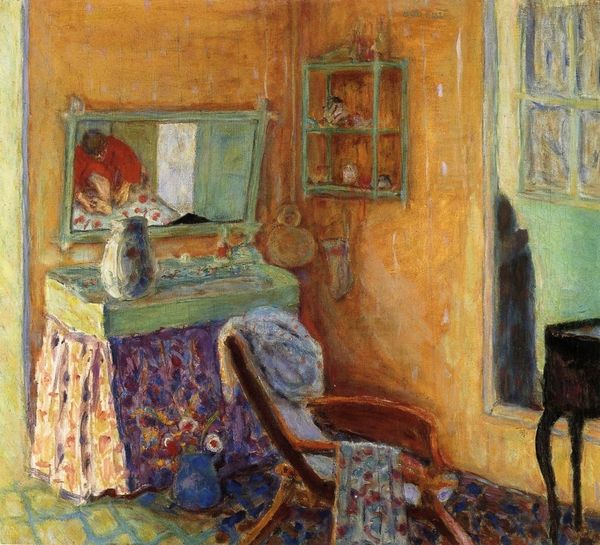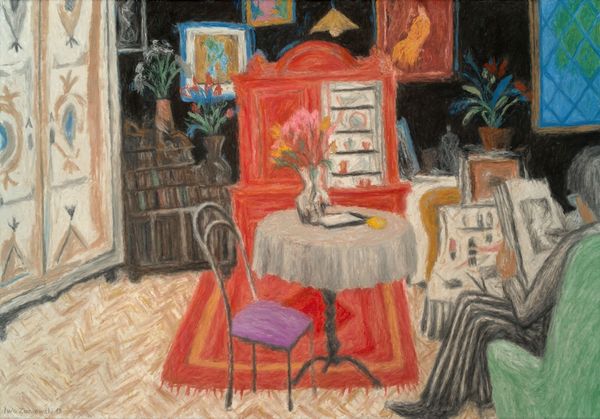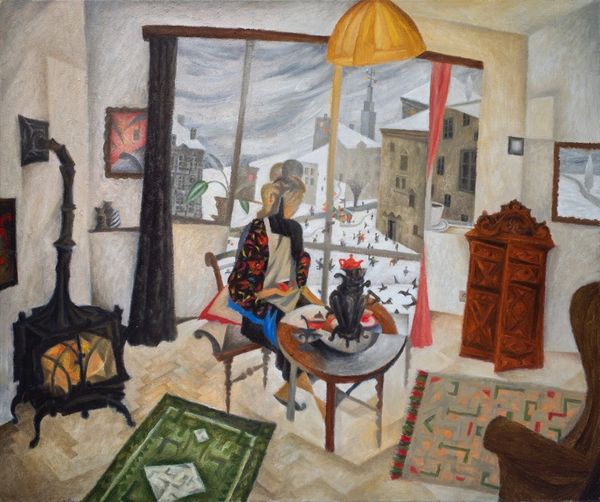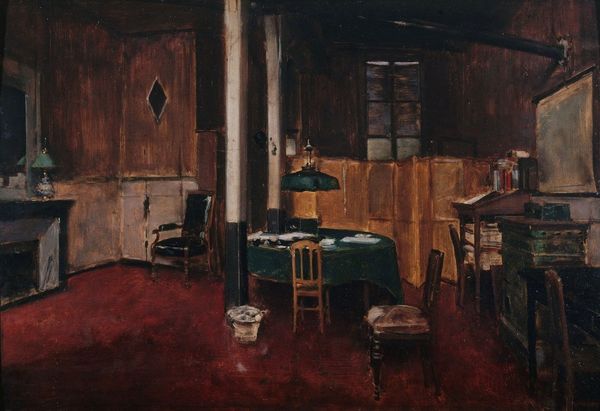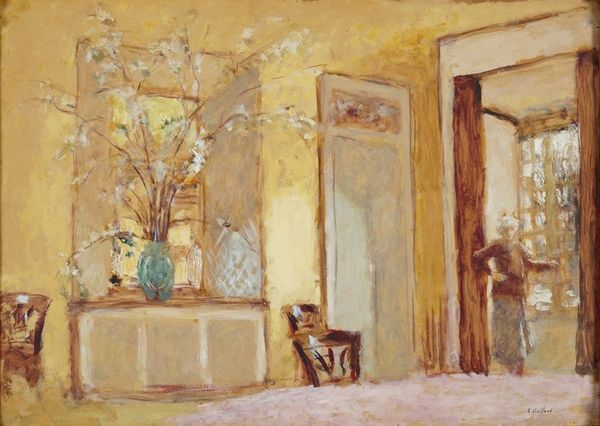
painting, oil-paint
#
portrait
#
figurative
#
painting
#
oil-paint
#
figuration
#
oil painting
#
intimism
#
genre-painting
#
post-impressionism
Copyright: Public Domain: Artvee
Editor: Here we have "At the Board Game," an oil painting by Édouard Vuillard, created in 1902. The textures and patterns create such a dense, almost claustrophobic feeling. What strikes you most about this interior scene? Curator: I find myself considering the societal constraints placed on women of that era. Confined to the domestic sphere, their interactions and intellectual pursuits often occurred within these very interiors. Notice how Vuillard uses the patterns – the wallpaper, the curtains, even the game board – to almost camouflage the figures into their environment. Do you see it that way too? Editor: I hadn’t thought of it that way, but yes, they do blend into the background. Is that intentional? Is Vuillard making a statement about women’s visibility, or lack thereof? Curator: Exactly. Consider how the act of playing a board game could be interpreted. Is it a leisure activity, or a subtle competition? Within the context of turn-of-the-century gender roles, could this scene suggest the limited avenues available for women to express agency and intellect? What are the power dynamics suggested by something so subtle? Editor: So the intimacy of the scene might actually mask a commentary on gender and societal expectations. Curator: Precisely. And I think by embedding his critique within a visually pleasing, even comforting, aesthetic, Vuillard encourages us to contemplate these underlying power structures. The beauty masks an important message about confinement and expectation. Editor: That’s a completely different perspective than I had coming in! I'll definitely look at Vuillard's work in a new light now. Curator: It's all about looking at the work with new questions and understanding its context.
Comments
No comments
Be the first to comment and join the conversation on the ultimate creative platform.
